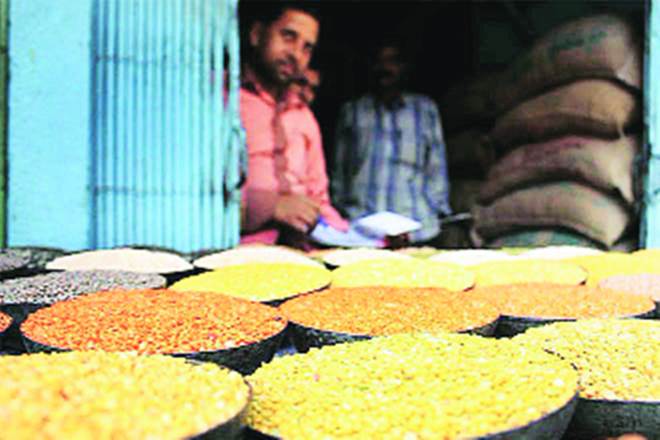Scientists from 21 global research institutes, including Kanpur-based Indian Institute of Pulses Research (IIPR), have identified genes in chickpeas (chana) which demonstrate resistance to drought and heat. This will help breeders to develop new varieties of chickpea with higher yields and better ability to withstand the rising temperatures due to climate change.
About 60-70% of world’s chickpea area is grown in India, but drought and increasing temperatures are said to cause more than 70% yield loss.
“Genome sequencing of 429 chickpea lines (varieties) from 45 countries have been completed. This is the largest-ever exercise of whole-genome re-sequencing of chickpea,” states a release by International Crops Research Institute for the Semi-Arid Tropics (ICRISAT).
A team from ICRISAT had led the research project, which also mapped the origin of chickpea. Other Indian institutes that participated in the project are: Indian Agricultural Research Institute (IARI), Osmania University and University of Agricultural Sciences.
“The genome-wide association studies identified several candidate genes for 13 agronomic traits. We could identify genes (e.g. REN1, ß-1, 3-glucanase, REF6) which can help the crop tolerate temperature up to 38 degrees and provide higher productivity,” said Rajeev Varshney, the project leader and research programme director of ICRISAT.
Dr Xu Xun, CEO and president, BGI Research, China, who was co-leader of the project said, “BGI is very excited to work with CGIAR institutes like ICRISAT in high-end science research which could enable development of drought and heat-tolerant chickpea varieties for India and Africa. BGI has been enjoying a collaboration with ICRISAT for the past decade and we look forward to work together on many exciting projects in the years to come.”
The study established a foundation for large-scale characterisation of germplasm, population genetics and crop breeding. It also helped understand domestication and post-domestication divergence of chickpea.
The efforts equipped the team with key insights into the crop’s genetic diversity, domestication and agronomic traits. Now, scientists will not require to use genetically modified (GM) technology but will rather opt for molecular breeding to develop new varieties.
This will help to develop suitable varieties for the central-south region in the country where temperature normally is higher during the harvesting season, said N P Singh, director of IIPR.
Chickpea, a rabi crop, is harvested in Telangana, starting mid-February. In other states, farmers begin harvesting the crop from around April 1.
“The heat resistance, if incorporated, in the new varieties, does not mean chickpeas can be grown in kharif. The nature of the crop will be same,” Singh said.
The genome sequencing study may help scientists to prevent the drop in productivity of chana in India.
The study was done in close collaboration with partners from the National Agricultural Research Systems. India, one of the biggest consumer of pulses in the world, faces increasing production gap. This new research could take India closer towards attaining self-sufficiency in pulse production. In India, the average yield of chickpea is about 1 tonne/hectare while in Ethiopia, it is as high as 3-4 tonne/hectare, Varshney said. Chickpea production this year is estimated at 10.32 million tonne, down from 11.23 million tonne in 2017-18.
The study also confirms that chickpea came to India from Fertile Crescent/ Mediterranean via Afghanistan and may have been introduced back to the primary centres of origin after 200 years. The new study speculates about possible introduction of chickpea to the world directly from Central Asia or East Africa rather than the Mediterranean.
“Our study indicates Ethiopia as secondary centre of diversity and also maps a migration route from Mediterranean/ Fertile Crescent to Central Asia, and in parallel from Central Asia to East Africa (Ethiopia) and South Asia (India),”
Varshney added.
